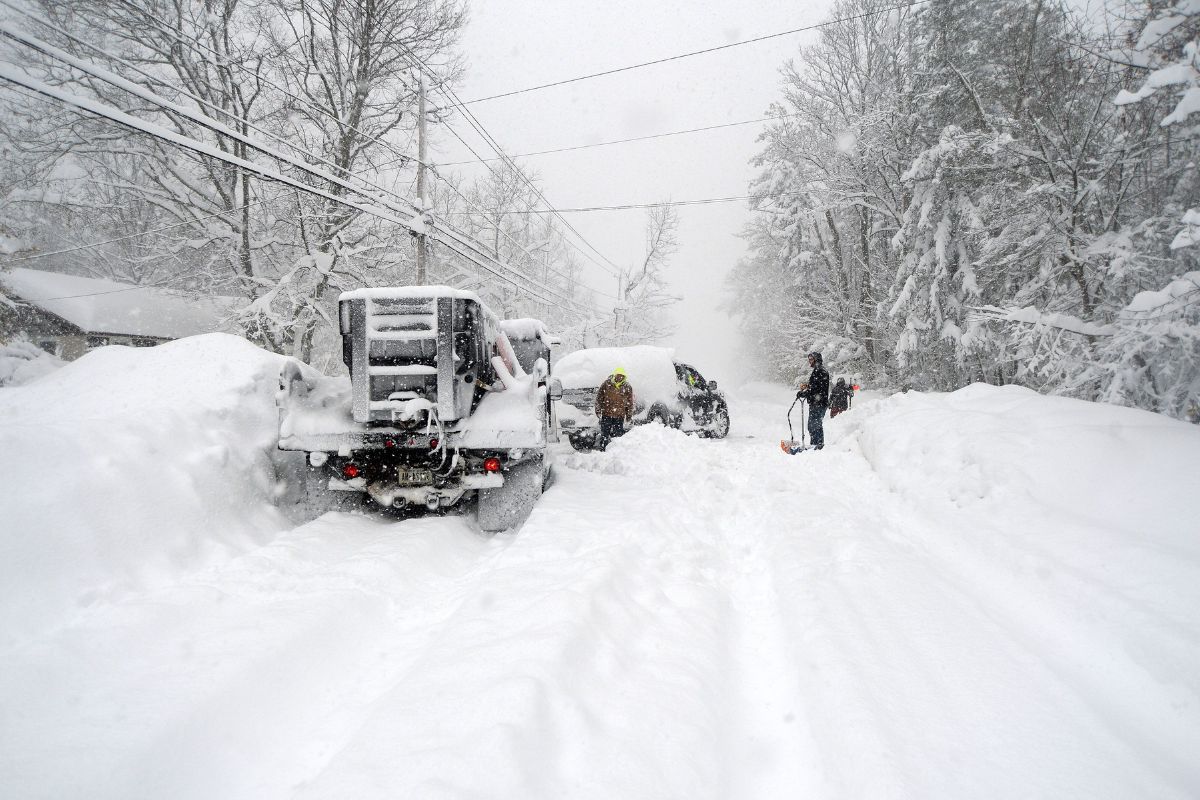
Buffalo weather is famous for its unpredictability and extremes. Did you know Buffalo experiences more snowfall than most U.S. cities? This city, nestled by Lake Erie, often gets buried under heavy snow due to lake-effect storms. Summers, however, bring warm, pleasant days perfect for outdoor activities. Buffalo's weather can change rapidly, making it a fascinating topic for weather enthusiasts. From record-breaking snowfalls to surprisingly mild winters, Buffalo keeps residents on their toes. Understanding these weather patterns can help you prepare for any season. Ready to learn more about Buffalo's unique climate? Let's dive into 26 intriguing facts that will surprise you!
Buffalo's Snowfall
Buffalo, New York, is famous for its snow. The city experiences some of the most intense winter weather in the United States. Here are some fascinating facts about Buffalo's snowfall.
- Buffalo averages about 94 inches of snow each year, making it one of the snowiest cities in the country.
- The city once received 199.4 inches of snow during the winter of 1976-1977, a record that still stands.
- Lake Erie plays a significant role in Buffalo's snowfall. When cold air passes over the warmer lake water, it creates lake-effect snow.
- In November 2014, a massive lake-effect snowstorm dumped over 7 feet of snow in some areas of Buffalo in just a few days.
- Buffalo's snowiest month is typically December, with an average of 27.4 inches of snow.
Temperature Extremes
Buffalo's weather isn't just about snow. The city experiences a wide range of temperatures throughout the year. Let's look at some of the extremes.
- The highest temperature ever recorded in Buffalo was 99°F on August 27, 1948.
- The coldest temperature ever recorded was -20°F on February 9, 1934.
- Buffalo experiences about 155 days of freezing temperatures each year.
- Despite its cold winters, Buffalo can have hot summers, with temperatures often reaching into the 80s and 90s.
Wind and Storms
Buffalo's location near Lake Erie also means it can experience some intense wind and storms. Here are some facts about the city's wind and storm patterns.
- Buffalo is known for its strong winds, especially in the winter. Wind speeds can reach up to 50 mph during storms.
- The city experiences about 10 thunderstorms each year, mostly during the summer months.
- Buffalo has a history of severe windstorms, including the infamous "Blizzard of '77," which combined heavy snowfall with hurricane-force winds.
- Tornadoes are rare in Buffalo, but they can occur. The most recent significant tornado hit the area in 1987.
Rainfall and Flooding
While snow is the most talked-about aspect of Buffalo's weather, the city also gets its fair share of rain. Here's what you need to know about Buffalo's rainfall and flooding.
- Buffalo receives an average of 40 inches of rain each year.
- The wettest month is typically June, with an average of 3.9 inches of rain.
- Flash flooding can occur in Buffalo, especially during heavy rainstorms in the summer.
- The city has experienced significant flooding events, including the devastating flood of 1972, which caused widespread damage.
Seasonal Changes
Buffalo's weather changes dramatically with the seasons. Each season brings its own unique weather patterns and challenges.
- Spring in Buffalo is often cool and wet, with temperatures gradually warming up from March to May.
- Summer is warm and humid, with temperatures averaging in the 70s and 80s.
- Fall is a beautiful time in Buffalo, with mild temperatures and colorful foliage.
- Winter is long and harsh, with heavy snowfall and freezing temperatures lasting from November to March.
Fun Weather Facts
Buffalo's weather has some quirky and interesting aspects that might surprise you. Here are a few fun facts about the city's weather.
- Buffalo is one of the cloudiest cities in the United States, with an average of 208 cloudy days each year.
- The city experiences about 37 days of fog each year, mostly in the fall and winter.
- Buffalo's weather can change rapidly. It's not uncommon to experience all four seasons in a single day.
- The city has a unique phenomenon known as "thundersnow," where thunderstorms produce snow instead of rain.
- Buffalo's weather has inspired numerous local traditions, including the annual "Snowball Fight" event held in Delaware Park.
Buffalo's Weather: A Unique Blend
Buffalo's weather is a fascinating mix of extremes. From heavy snowfalls to warm summers, the city's climate keeps residents on their toes. The lake effect snow, caused by cold air moving over the warmer waters of Lake Erie, is a defining feature. This phenomenon can lead to impressive snow totals, making Buffalo one of the snowiest cities in the U.S. Yet, summer offers a pleasant contrast with warm, sunny days perfect for outdoor activities.
Understanding Buffalo's weather helps residents and visitors prepare for its unpredictability. Whether you're bundling up for a snowy winter day or enjoying a sunny summer afternoon, Buffalo's climate offers something for everyone. Embrace the variety, and you'll find that Buffalo's weather, with all its quirks, adds to the city's unique charm.
Was this page helpful?
Our commitment to delivering trustworthy and engaging content is at the heart of what we do. Each fact on our site is contributed by real users like you, bringing a wealth of diverse insights and information. To ensure the highest standards of accuracy and reliability, our dedicated editors meticulously review each submission. This process guarantees that the facts we share are not only fascinating but also credible. Trust in our commitment to quality and authenticity as you explore and learn with us.
